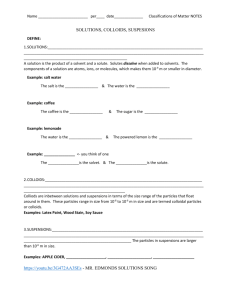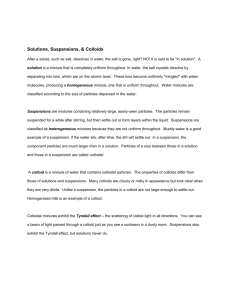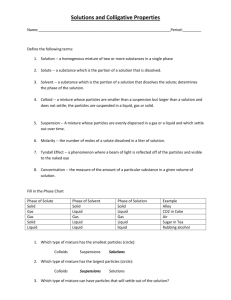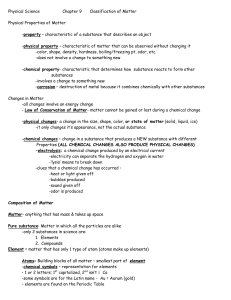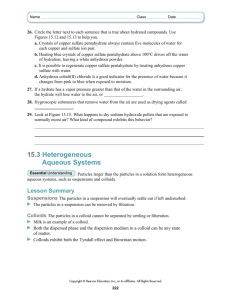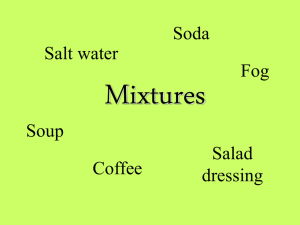Chapter 14 - Midland Park School District
advertisement
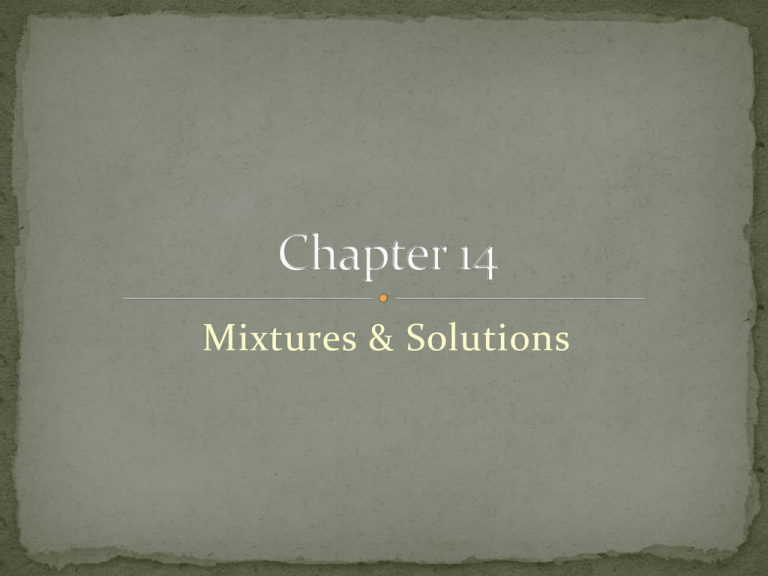
Mixtures & Solutions Objectives Compare the properties of suspensions, colloids, and solutions. Identify types of colloids and types of solutions. Describe the electrostatic forces in colloids. A heterogeneous mixture is a mixture that does not have a uniform composition and in which the individual substances remain distinct. The individual substances retain their individual chemical properties. They are not blended smoothly through the mixture. The two types of heterogeneous mixtures are suspensions & colloids. Suspensions are mixtures containing particles that settle out if left undisturbed. Suspensions can also be separated by filtering. Examples are muddy water and some kinds of clay. Some suspensions separate into a solidlike mixture on the bottom and water on the top. When the solid-like mixture, if stirred or agitated, flows like a liquid, it is said to be thixotropic. Some substances that behave this way are toothpaste and paint. Colloids are heterogeneous mixtures of intermediate sized particles (between 1 nm and 1000 nm) that do not settle out, nor can they be filtered apart. The most abundant substance in a mixture is called the dispersion medium. Milk is a colloid. Its dispersion medium is a liquid. Colloids are categorized according to the phases of the particles dispersed in the dispersion medium. Milk is considered an emulsion because its dispersed particles are a liquid like its dispersion medium. See the table on pg. 477 in the text (next slide). The particles in a colloid do not settle out because they often have charged or polar structures. These particles attract the opposite charge of dispersingmedium particles. Electrostatic layers work to keep the particles suspended. Brownian motion is the jerky, random movements of particles in a liquid colloid, from the results of particle collisions. These erratic movements were first observed by Robert Brown (1773-1858), who noticed the movement of pollen grains dispersed in water. Brownian motion results from collisions between the dispersing-medium particles and the dispersed particles. Concentrated colloids are often cloudy or opaque but dilute ones may appear as clear as a solution. However, dispersed colloid particles will scatter light, no matter how dilute the colloid. The Tyndall effect is the scattering of light by dispersed colloid particles. The Tyndall effect can be used to determine the concentration of colloid particle.s Solutions are homogeneous mixtures that contain two or more substances called the solute and solvent. The solute is the substance that dissolves. The solvent is the dissolving medium. It is not possible to distinguish the solute from the solvent by appearance. It is also not possible to separate the solute from the solvent by filtration. Most solutions are liquids, but gaseous and solid solutions exist. The state of the solvent determines the type of solution. In aqueous solutions, the solvent is water. See text pg. 479 A substance that dissolved in a solvent is said to be soluble in that solvent. A substance is insoluble if . . . For a liquid in a liquid solution, two substances that are soluble in each other are miscible. Immiscible means . . .

